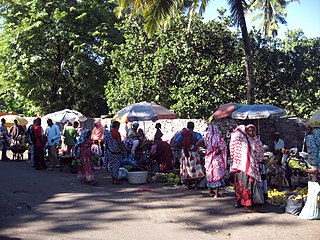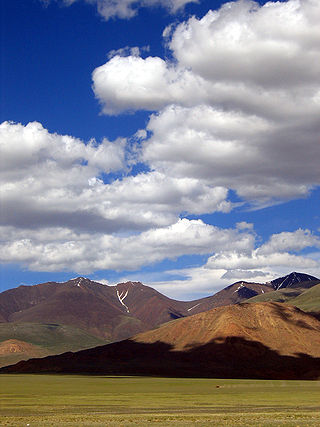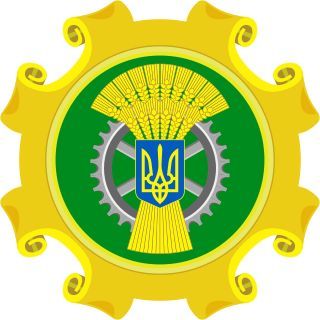International and domestic cooperation
Besides its domestic clients, Agrotechimpex has working relationships with such government agencies as the Ministry of Agriculture and Food of Mongolia, State Reserve Authority and State Veterinary Department.
Internationally, the company has established partnerships with companies from Belarus, China, Finland, India, Italy, Japan and Russia. Agrotechimpex imports such products as Kubota, New Holland tractors and Nova and Sampo combines.
Agrotechimpex actively participates in implementation of aid projects by foreign governments. For example, Agrotechimpex Company acts as domestic Agent (subcontractor) for Japanese Government aid project KR-2 to supply tractors and combines for Mongolian farmers.
The following outline is provided as an overview of and topical guide to agriculture:

The economy of the Comoros is based on subsistence agriculture and fishing. Comoros has inadequate transportation links, a young and rapidly increasing population, and few natural resources. The low educational level of the labor force contributes to a subsistence level of economic activity, high unemployment, and a heavy dependence on foreign grants and technical assistance. The Comoros, with an estimated gross domestic product (GDP) per capita income of about $700, is among the world's poorest and least developed nations. Although the quality of the land differs from island to island, most of the widespread lava-encrusted soil formations are unsuited to agriculture. As a result, most of the inhabitants make their living from subsistence agriculture and fishing. Average wages in 2007 hover around $3–4 per day.
Danish Committee for Aid to Afghan Refugees (DACAAR)(Danish: Den danske komité for hjælp til afghanske flygtninge) is a non-political, non-governmental, non-profit humanitarian and development organization working to improve the lives of the Afghan people since 1984.

Agriculture, forestry, and fishing form the primary sector of industry of the Japanese economy together with the Japanese mining industry, but together they account for only 1.3% of gross national product. Only 20% of Japan's land is suitable for cultivation, and the agricultural economy is highly subsidized.
On the eve of the 1921 revolution, Mongolia had an underdeveloped, stagnant economy based on nomadic animal husbandry. Farming and industry were almost nonexistent; transportation and communications were primitive; banking, services, and trade were almost exclusively in the hands of Chinese or other foreigners. Most of the people were illiterate nomadic herders, and a large part of the male labour force lived in the monasteries, contributing little to the economy. Property in the form of livestock was owned primarily by aristocrats and monasteries; ownership of the remaining sectors of the economy was dominated by Chinese or other foreigners. Mongolia's new rulers thus were faced with a daunting task in building a modern, socialist economy.

Soviet foreign trade played only a minor role in the Soviet economy. In 1985, for example, exports and imports each accounted for only 4 percent of the Soviet gross national product. The Soviet Union maintained this low level because it could draw upon a large energy and raw material base, and because it historically had pursued a policy of self-sufficiency. Other foreign economic activity included economic aid programs, which primarily benefited the less developed Council for Mutual Economic Assistance (COMECON) countries of Cuba, Mongolia, and Vietnam.

Roughly one-third of Iran's total surface area is suitable for farmland, but because of poor soil and a lack of adequate water distribution in many areas, most of it is not under cultivation. Only 12% of the total land area is under cultivation but less than one-third of the cultivated area is irrigated; the rest is devoted to dryland farming. Some 92 percent of agricultural products depend on water. The western and northwestern portions of the country have the most fertile soils. Iran's food security index stands at around 96 percent.

Agriculture in Mongolia constitutes over 10% of Mongolia's annual gross domestic product and employs one-third of the labor force. However, the high altitude, extreme fluctuation in temperature, long winters, and low precipitation provides limited potential for agricultural development. The growing season is only 95 – 110 days. Because of Mongolia's harsh climate, it is unsuited to most cultivation.

For millennia, agriculture has played an important role in the Chinese economy and society. By the time the People's Republic of China was established in 1949, virtually all arable land was under cultivation; irrigation and drainage systems constructed centuries earlier and intensive farming practices already produced relatively high yields. But little prime virgin land was available to support population growth and economic development. However, after a decline in production as a result of the Great Leap Forward (1958–60), agricultural reforms implemented in the 1980s increased yields and promised even greater future production from existing cultivated land.
At the time of its founding, the People's Republic of China was one of the poorest countries in the world. In the early 1950s, its industry developed rapidly through a state-led process heavily influenced by the Soviet experience. Aiming to close the gap between its political ambitions and its phase of development, China began the Great Leap Forward, which sought to even more rapidly industrialize the country. The effort largely failed, and its policies contributed to famine.
Trade is a key factor of the economy of China. In the three decades following the dump of the Communist Chinese state in 1949, China's trade institutions at first developed into a partially modern but somewhat inefficient system. The drive to modernize the economy that began in 1978 required a sharp acceleration in commodity flows and greatly improved efficiency in economic transactions. In the ensuing years economic reforms were adopted by the government to develop a socialist market economy. This type of economy combined central planning with market mechanisms. The changes resulted in the decentralization and expansion of domestic and foreign trade institutions, as well as a greatly enlarged role for free market in the distribution of goods, and a prominent role for foreign trade and investment in economic development.
Agriculture in Cameroon is an industry that has plenty of potential.

The primary crops produced in Azerbaijan are agricultural cash crops, grapes, cotton, tobacco, citrus fruits, and vegetables. The first three crops account for over half of all production, and the last two together account for an additional 30 percent. Livestock, dairy products, and wine and liquors are also important farm products.

Agriculture in Saudi Arabia is focused on the export of dates, dairy products, eggs, fish, poultry, fruits, vegetables, and flowers to markets around the world after achieving self-sufficiency in the production of such products. The government of Saudi Arabia is heavily involved in the agriculture industry and subsidizing corporate farming and the Ministry of Environment, Water and Agriculture is primarily responsible for agricultural policy. In the private sector, farmers receive long-term interest-free government loans and low-cost water, fuel, electricity, and duty-free imports of raw materials and machinery.
Ghana'sMinistry of Food and Agriculture (MOFA) is the government agency responsible for the development and growth of agriculture in the country. The jurisdiction does not cover the cocoa, coffee, or forestry sectors. The primary organisation and main area of the presidential administration of Ghana is the nation's Ministry of Food and Agriculture (MOFA), which is in charge of creating and carrying out policies and plans for the agricultural sector within the framework of an efficient national socio-economic development and prosperity agenda. The Ministry's plans and programmes are created, coordinated, and put into effect using frameworks for policy and strategy using a sector-wide approach. The Food and Agriculture Sector Development Policy II and the Medium Term Agriculture Sector Investment Plan were both developed with the aid of MOFA in relation to this.
The National Centre for Cold-chain Development (NCCD) is an autonomous think tank body established by the Government of India with an agenda to positively impact and promote the development of the cold-chain sector in the country. NCCD was registered under the Society Registration Act, 1860 and given sanction by the Union Cabinet of India on 9 February 2012 in a session chaired by the country's Prime Minister.

The Ministry of Agrarian Policy and Food is the central executive authority of Ukraine in charge of country's agro-development. It is one of the oldest government agencies of Ukraine. On 29 August 2019 the ministry's function were taken over by the Ministry of Economic Development, Trade and Agriculture. On 17 December 2020 the ministry was resurrected.

The agricultural machinery industry or agricultural engineering industry is the part of the industry, that produces and maintain tractors, agricultural machinery and agricultural implements used in farming or other agriculture. This branch is considered to be part of the machinery industry.

India–Niger relations refers to the international relations that exist between India and Niger.

Burkina Faso–India relations refers to the international relations that exist between Burkina Faso and India. Burkina Faso maintains an embassy in New Delhi. India maintained an embassy in Ouagadougou from November 1996 until its closure in July 2002. Currently, India maintains an honorary consulate in Ouagadougou, which functions under the jurisdiction of the High Commission of India in Accra, Ghana.











